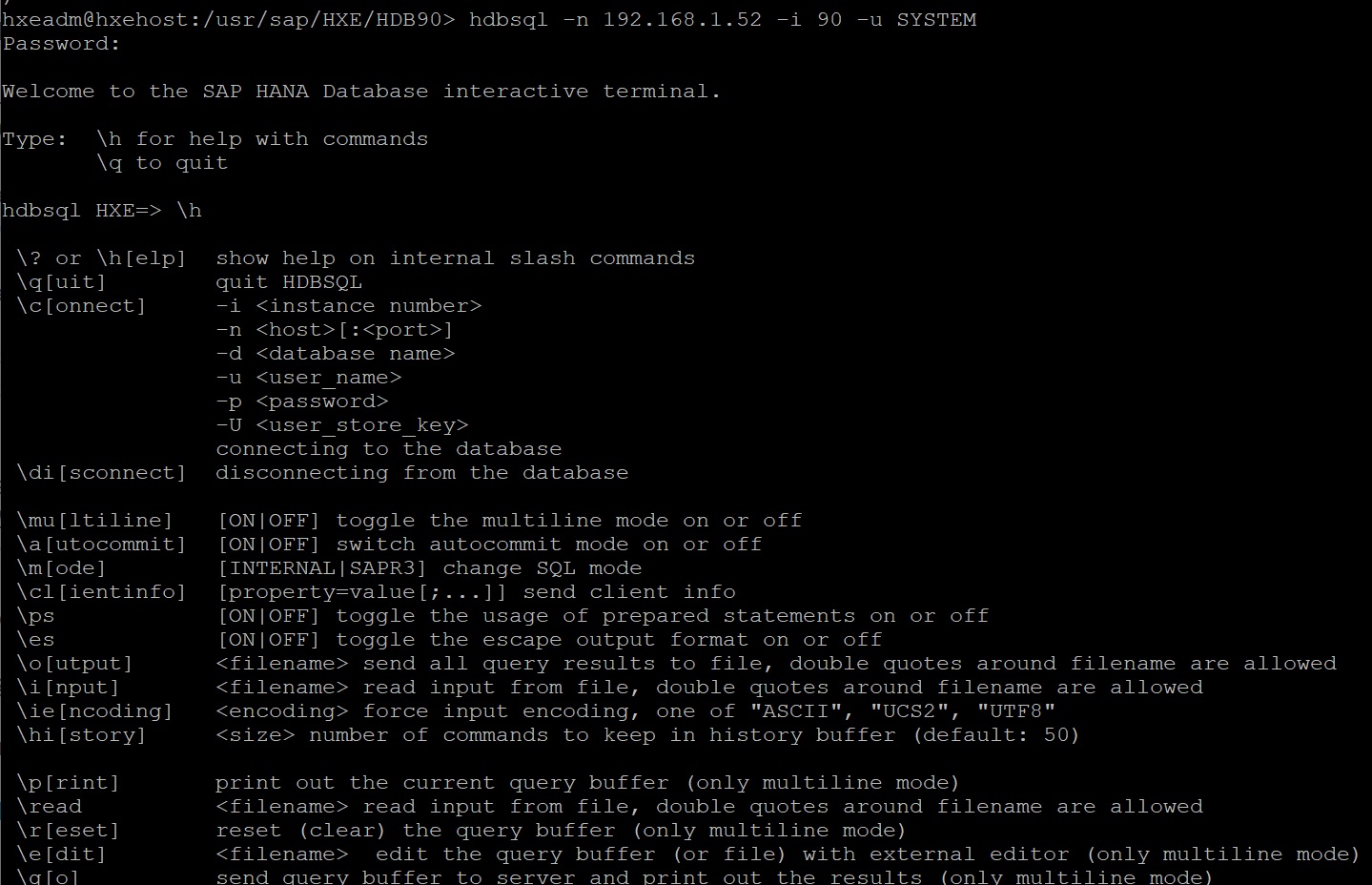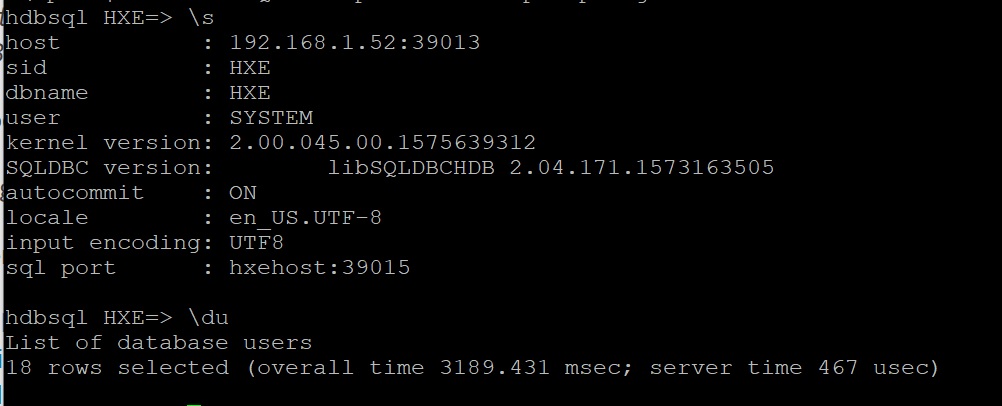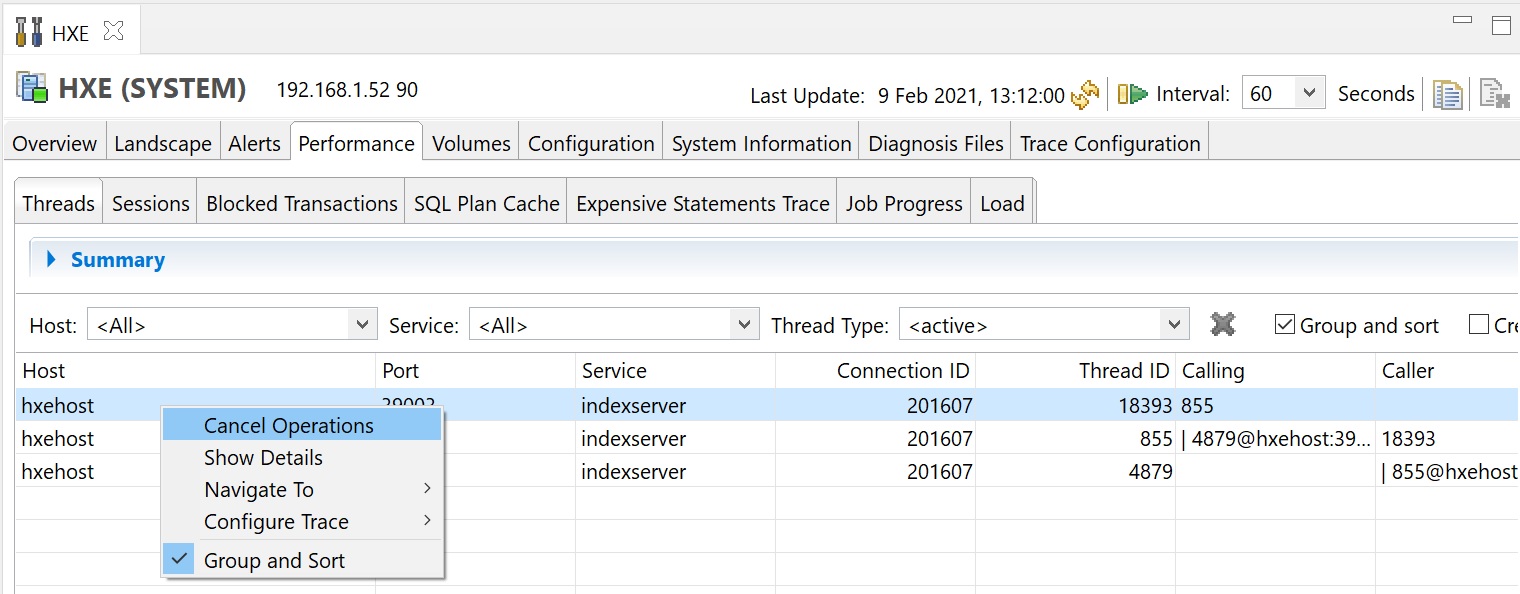In this section I detail a few commandline commands that you can use, the first being how to connect to the database using the hdbsql command.
hdbsql -n <host IP or name> -i <instance number> -u <user>
Once connected you can use a number of commands to get details of the database

\s gives you details on the database, \du lists the users

You can directly execute a SQL queury using the hdbsql as per below

The HDB command allows you to stop/start the database and to list the database processes using the info parameter

You can also use the sapcontrol command to get information about the SAP Instance

There are a number of tables that you should be aware of both from a admin/developer point of view, the m_system_limits displays the limits of the system

You can display the real size of all the tables in the database

Provides runtime information of columns of column tables

Provides a history of column unloads. When a column is loaded, it is copied from persistence into SAP HANA column store memory. Unloads are table column displacements from column store memory. Tables in row store are typically loaded during startup and remain in memory permanently. While loads usually don't indicate issues, unloads are critical for the following reasons: They are often indicators of memory bottlenecks and they introduce overhead because unloaded column may have to be reloaded after some time.

You can use the Hana Database Studio to kill (cancel) processes, in the administration console select performance -> threads, select a thread (process) and right-click to display a dropdown, here you see an option to Cancel Operations
